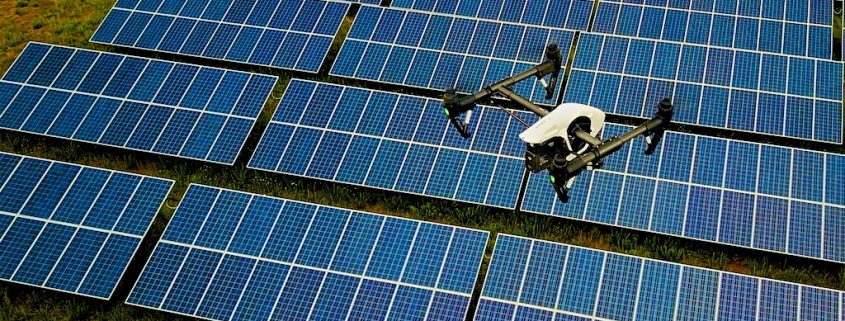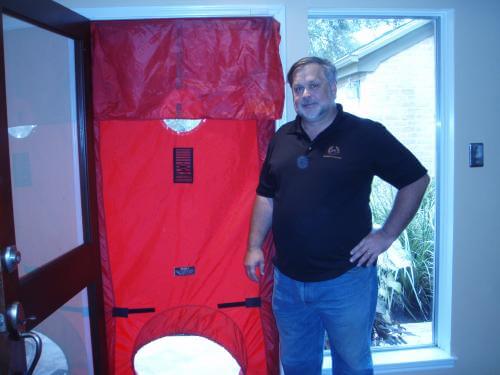The homeowner’s checklist to energy testing and smarter efficiency improvements
The homeowner’s checklist to energy testing and smarter efficiency improvements
Blog Article
Just How Energy Testing Can Cause More Lasting Living Solutions
Power testing is a crucial tool for advertising sustainable living. It uncovers inefficiencies in power usage within homes. Approaches such as energy audits and thermal imaging offer useful understandings. Property owners can identify areas needing renovation, from insulation to appliances. Attending to these inadequacies can lead to significant power savings. Many remain unaware of the complete potential of these practices. What actions can people require to enhance their homes and add to an extra sustainable future?
Understanding Power Testing and Its Value

Common Techniques of Power Screening
There are a number of typical approaches of power screening that property owners can make use of to assess their energy effectiveness (energy testing). One commonly utilized method is the blower door test, which determines the air leakage in a home. By pressurizing the building, it identifies drafty areas that might require sealing. Another technique is thermal imaging, where infrared electronic cameras detect temperature variations in ceilings, home windows, and walls, highlighting insulation issues.Energy audits are likewise popular, entailing an extensive evaluation of a home's energy use, commonly performed by a professional. These audits might include reviewing heating and cooling down systems, home appliances, and general energy intake patterns. In addition, wise power meters can give real-time data on energy use, aiding house owners comprehend their usage routines. Together, these approaches supply important insights, making it possible for house owners to make educated decisions regarding enhancing their power effectiveness and promoting lasting living methods
Identifying Energy Inefficiencies in your house
Determining energy ineffectiveness in a home is vital for property owners aiming to decrease power usage and lower energy expenses. Common areas to assess consist of insulation, windows, and devices. Poor insulation can result in substantial heat loss in winter months and unwanted warm gain in summer, making heating and air conditioning systems work harder. Breezy windows contribute in a similar way, allowing conditioned air to run away and raising power demand.Additionally, obsolete appliances frequently consume extra energy than their contemporary equivalents, further worsening inefficiency. Property owners need to also think about the illumination system, as incandescent light bulbs make use of more energy contrasted to LED options.Regular upkeep of cooling and heating systems is essential, as overlook can bring about lowered efficiency. By systematically reviewing these elements of a home, home owners can identify locations requiring improvement. Dealing with these inadequacies not only improves convenience yet also contributes to a more sustainable way of life by reducing power waste.
The Duty of Energy Audits in Sustainability
Energy audits play an essential role in promoting sustainability by giving homeowners with an extensive evaluation of their energy usage. These assessments determine areas where power is wasted, permitting individuals to comprehend their usage patterns and make educated decisions for renovation. By revealing inadequacies in home heating, air conditioning, insulation, and devices, energy audits serve as an essential device for decreasing total power demand.Furthermore, they help with the implementation of energy-saving steps, such as updating insulation or installing energy-efficient lights, which can considerably decrease energy bills and reduce carbon impacts. The insights gained from an energy audit encourage home owners to focus on sustainability in their living environments. As even more families involve in this procedure, the collective effect adds to wider ecological objectives, fostering a culture of energy awareness and obligation. Ultimately, power audits are foundational to progressing lasting living services, profiting both private home owners and the atmosphere at huge.
Innovative Technologies for Energy Performance
As homeowners increasingly look for to boost their energy effectiveness, innovative innovations are emerging to sustain these ventures. Smart home systems, geared up with sensors and automation, enable house owners to regulate and check power usage in real-time. These systems can readjust cooling, home heating, and lighting based on occupancy, consequently reducing waste.In addition, advancements in energy-efficient home appliances have actually made significant strides. Instruments such as power STAR-rated fridges and washing makers eat less energy while supplying ideal performance. In addition, the integration of article eco-friendly energy sources, like photovoltaic panels and wind generators, makes it possible for property owners to create their own power, lowering dependence on nonrenewable resources.Building materials have actually likewise evolved, with alternatives like protected concrete types and energy-efficient windows adding to lowered energy loss. With each other, these cutting-edge technologies not only enhance power efficiency but additionally promote an even more sustainable living atmosphere, empowering homeowners to make impactful choices in their power usage practices.
Long-Term Conveniences of Lasting Living
While numerous might check out sustainable living as a fad, its lasting advantages prolong much past plain way of life choices. Welcoming lasting methods brings about substantial decreases in carbon impacts, adding to a healthier planet. By reducing source intake and focusing on eco-friendly energy, neighborhoods and people can experience lower energy expenses. This financial relief can enhance economic stability gradually, enabling reinvestment in other essential areas.Furthermore, lasting living cultivates more powerful community ties as individuals team up on local campaigns, promoting social communication. Health benefits also emerge, as reduced pollution and increased eco-friendly areas improve air quality and total well-being. In addition, future generations will acquire a much more sustainable atmosphere, making sure the availability of natural deposits and biodiversity. Eventually, the long-term benefits of lasting living encompass ecological, financial, and social dimensions, offering an engaging instance for people to embrace and maintain these methods for the better good.
Steps to Carry Out Energy-Saving Solutions
Executing energy-saving services starts with a complete assessment of energy consumption patterns to recognize locations for renovation. When these patterns are understood, people can determine energy-efficient upgrades that align with their needs. Continual surveillance and modifications to power use assurance that these services stay effective gradually.
Assess Power Consumption Patterns

Assessing power intake patterns is an essential action towards recognizing effective energy-saving services. By methodically tracking usage throughout different times and devices, organizations and individuals can pinpoint areas of too much usage. This evaluation can expose peak use durations, enabling a much better understanding of when power needs are greatest. In addition, examining patterns enables comparisons in between similar devices, highlighting those that operate less successfully. Information collection methods, such as smart meters and energy audits, provide important understandings right into total power usage. Moreover, identifying trends over time can aid in identifying seasonal variations and shifts in consumption behaviors. This fundamental expertise is important for developing targeted techniques that promote sustainable living and lower overall power expenditure.
Recognize Energy-saving Upgrades
To effectively implement energy-saving options, identifying energy-efficient upgrades is important for both organizations and homeowners. This process starts with a detailed assessment of existing systems, including a/c devices, insulation, and devices. Upgrades might encompass installing ENERGY STAR-rated home appliances, boosting insulation, and utilizing energy-efficient windows. Additionally, over at this website executing smart thermostats can enhance home heating and cooling routines, lowering energy usage. Changing to LED lights is an additional reliable action, as it takes in considerably much less power than standard light bulbs. Exploring renewable power alternatives, such as solar panels, can give lasting financial savings. Ultimately, prioritizing these upgrades not only adds to lowered energy costs yet also fosters a dedication to sustainability, profiting both the environment and future generations.
Monitor and Change Use
Surveillance and changing energy use is vital for optimizing the advantages of energy-saving solutions. On a regular basis reviewing energy usage patterns permits companies and individuals to determine locations for enhancement. By utilizing wise meters and power monitoring systems, customers can track real-time use and detect any anomalies that may suggest inefficiencies.Adjusting habits, such as switching off lights and disconnecting extra tools, further enhances energy cost savings. In addition, scheduling home appliances to operate throughout off-peak hours can significantly minimize costs.Conducting periodic power audits assurances that implemented remedies continue to be reliable with time. By proactively involving in surveillance and changing methods, people can optimize their energy efficiency, contribute to sustainability initiatives, and inevitably minimize their environmental footprint.
Regularly Asked Inquiries
Just how Much Does a Power Audit Commonly Price?

Can Energy Testing Help Reduce Utility Bills?
Energy testing can noticeably decrease utility expenses by recognizing ineffectiveness in a home's power usage. By resolving these issues, house owners often experience lower consumption and expenses, bring about more economical energy monitoring and improved economic savings.
What Qualifications Should an Energy Auditor Have?
A power auditor must possess appropriate certifications, such as RESNET or BPI, along with experience in structure sciences. energy testing south carolina. Strong logical skills and understanding of energy effectiveness methods are necessary for performing exact evaluations and providing reliable suggestions
Are There Federal Government Incentives for Energy Effectiveness Upgrades?
Government motivations for power efficiency upgrades frequently exist, including tax debts, discounts, and grants. These programs intend to encourage house owners and businesses to buy energy-saving modern technologies, eventually advertising environmental sustainability and lowering general power consumption.
Just how Commonly Should I Conduct Energy Screening in My Home?
Power testing should ideally be conducted each year to recognize inefficiencies. Homeowners might think about extra regular analyses after substantial renovations, useful content modifications in power costs, or if unusual drafts or temperature level variants are seen within the home. Power screening enables the evaluation of exactly how well a home utilizes energy, identifying locations where waste takes place. Identifying energy ineffectiveness in a home is essential for property owners aiming to lower energy consumption and reduced utility expenses. Power audits play a crucial role in promoting sustainability by offering property owners with a substantial evaluation of their power use. By revealing ineffectiveness in heating, cooling, insulation, and home appliances, energy audits offer as a critical device for minimizing general energy demand.Furthermore, they facilitate the execution of energy-saving actions, such as upgrading insulation or installing energy-efficient lighting, which can substantially reduce utility bills and reduce carbon impacts. Energy testing can significantly decrease energy expenses by identifying inefficiencies in a home's energy use.
Report this page